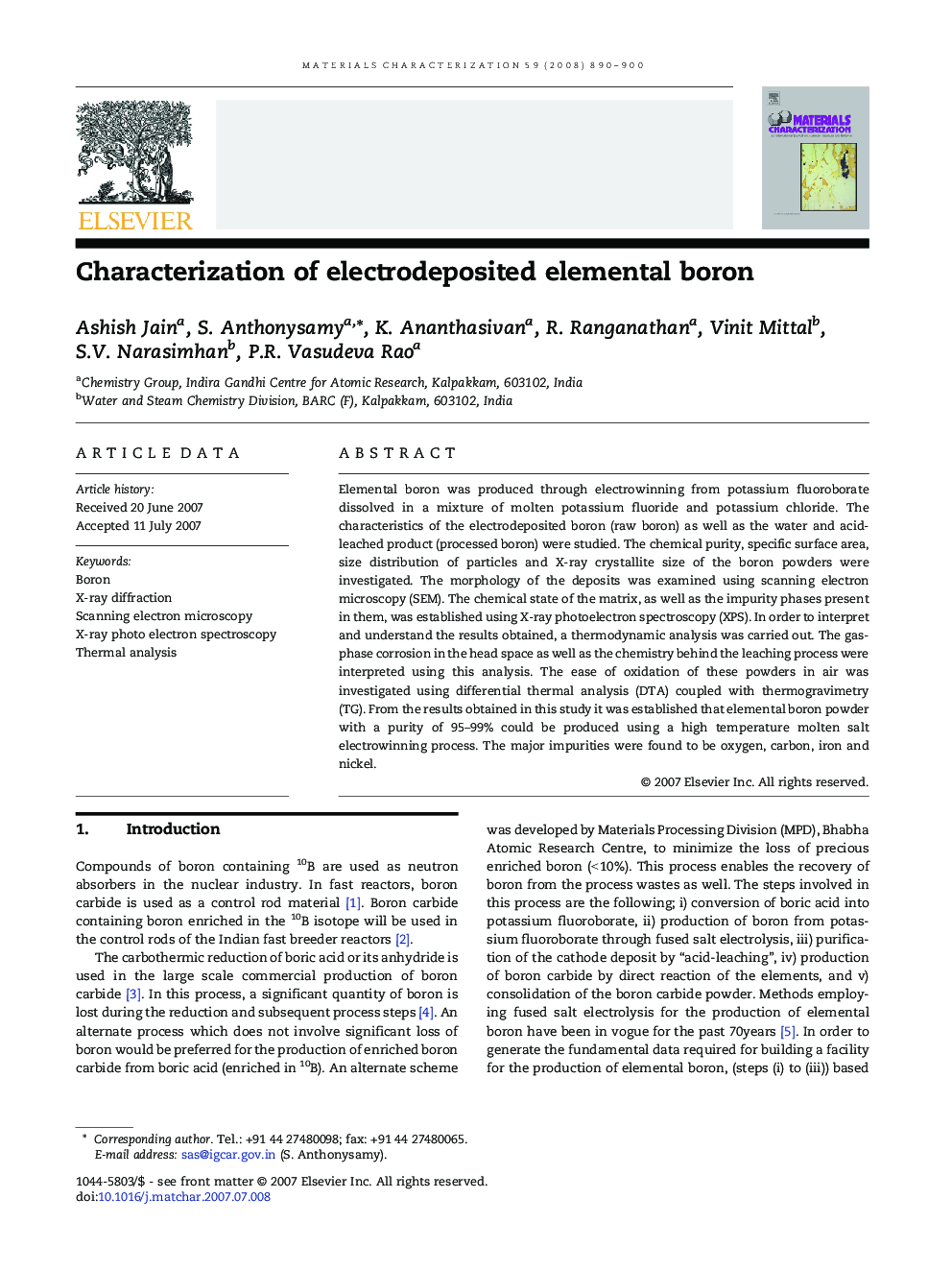| Article ID | Journal | Published Year | Pages | File Type |
|---|---|---|---|---|
| 1572889 | Materials Characterization | 2008 | 11 Pages |
Elemental boron was produced through electrowinning from potassium fluoroborate dissolved in a mixture of molten potassium fluoride and potassium chloride. The characteristics of the electrodeposited boron (raw boron) as well as the water and acid-leached product (processed boron) were studied. The chemical purity, specific surface area, size distribution of particles and X-ray crystallite size of the boron powders were investigated. The morphology of the deposits was examined using scanning electron microscopy (SEM). The chemical state of the matrix, as well as the impurity phases present in them, was established using X-ray photoelectron spectroscopy (XPS). In order to interpret and understand the results obtained, a thermodynamic analysis was carried out. The gas-phase corrosion in the head space as well as the chemistry behind the leaching process were interpreted using this analysis. The ease of oxidation of these powders in air was investigated using differential thermal analysis (DTA) coupled with thermogravimetry (TG). From the results obtained in this study it was established that elemental boron powder with a purity of 95–99% could be produced using a high temperature molten salt electrowinning process. The major impurities were found to be oxygen, carbon, iron and nickel.
